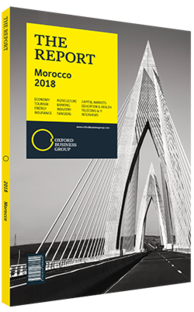Selma Belkhayat, Managing Director, Aswaq Management Services (AMS) Morocco: Interview

Interview: Selma Belkhayat
What trends are you seeing in terms of demand in the Moroccan retail real estate sector?
SELMA BELKHAYAT: We are seeing a growing mall culture among consumers. This development has led to a more structured organisation of the retail market, which consisted formerly of street retail dispersed across various neighbourhoods. Increasingly, brands have been concentrating in commercial hubs, which led to the advent of the shopping mall format at the end of the 2000s. To Moroccans, a shopping mall represents a form of entertainment and escape from their routine, not just mere consumption. This strong expectation from consumers wanting to experience “retailtainment” requires integrating a leisure component, not only in the offer, but also in the animation and design of the shopping malls that are being developed.
As for retailers, they have also become more sophisticated in their expectations, seeking not only real estate, but a comprehensive value proposition from the landlord, including marketing and variable rent levels pegged on turnover. We also note that while brands are increasingly experimenting with large retail formats that allow them to showcase their full offer, retail park operators – traditionally located in the outskirts of the cities – are developing smaller formats to fit within urban shopping malls and to benefit from the synergies allowed by such integrated concepts.
What are the biggest challenges international real estate firms in the country are facing?
BELKHAYAT: The retail real estate market in Morocco faces two types of challenges: ones linked to the macroeconomic environment of the country and ones that are specific to the real estate sector. Macroeconomic challenges relate mostly to the unique nature of the purchasing power in Morocco. Indeed, although it has been growing continuously, Moroccan purchasing power has seen its rate of growth decrease. Besides, we can assume that Morocco does not have one middle class, but rather several middle classes with many different needs, making the market challenging and unique. In addition, disparities exist between different cities, so it is extremely hard to standardise the offer or duplicate best practices from one city to the next. In this context, finding qualified human resources can be challenging, as beyond expertise, a deep insight is required.
Despite efforts to improve the regulatory framework for the sector, a lack of solid and integrated policies has been challenging for international real estate firms. For example, the recent law passed in 2016 regarding regulated real estate vehicles is still pending implementation, and many professionals are waiting for it to set a proper and pragmatic legal and fiscal framework.
To what extent is supply ready to meet the standards of international demand?
BELKHAYAT: Retail operators, whether franchise holders or international brands directly in the market, have increasingly sophisticated standards when it comes to real estate, from infrastructure quality to security or aesthetics. Morocco has proven capable of matching these needs, launching large-scale infrastructure projects, ensuring a stable economic environment and attracting renowned architects. The country has undeniable potential and ranks 7th out of 30 emerging economies in the Global Retail Development Index 2017.
However, while we have acquired a range of skills and know-how on retail space that meets international standards, creating sustainable retail ecosystems is still in a learning phase. There has been a significant mismatch between supply and demand in past years. In retail real estate, performance does not solely rely on design. Developers have started to take into account the use of materials and installations in operational contexts, layouts conducive to a pleasant customer experience, and ways to enhance synergies between different components of mixed-use projects. These are key to ensuring retail destinations perform sustainably.
You have reached the limit of premium articles you can view for free.
Choose from the options below to purchase print or digital editions of our Reports. You can also purchase a website subscription giving you unlimited access to all of our Reports online for 12 months.
If you have already purchased this Report or have a website subscription, please login to continue.

